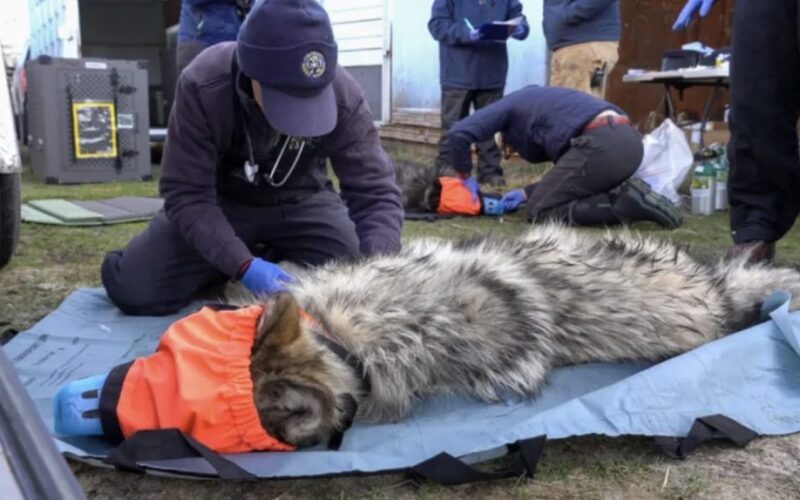Denver, Colorado (Richa Walia): Colorado Parks and Wildlife (CPW) is reconsidering its wolf translocation procedures as it looks to import a second group of gray wolves from British Columbia, following the deaths of five of the 15 wolves introduced earlier this year.
Speaking before the Water Resources and Agriculture Review Committee on Monday, CPW Deputy Director Reid Dewalt announced the agency’s plans to assess its current translocation methods to determine whether modifications could enhance wolf survival rates.
“Out of an abundance of caution, CPW will assess the mortalities of wolves translocated in 2025 to determine if any translocation protocols should be modified,” Dewalt told legislators.
CPW has resumed discussions with the B.C. Ministry of Water, Lands, and Resource Stewardship to renew last year’s agreement that facilitated the import of 15 wolves. The new discussions could pave the way for a second round of wolf transfers to Colorado in 2025.
“These animals have shown relatively positive behavior patterns on our landscape so far,” said Jeff Davis, Director of CPW. One reason for selecting British Columbia as the source, Davis noted, was that the wolves there have not had prior exposure to livestock — a lesson learned from previous wolf introductions in Oregon.
Despite early optimism, a third of the introduced wolves have since died. Two were killed after crossing into Wyoming, where protections for wolves differ significantly from those in Colorado. The remaining three deaths occurred within Colorado and are under investigation by the U.S. Fish and Wildlife Service since wolves are federally listed as endangered in the state.
Colorado’s wolf reintroduction plan mandates a review of translocation practices if survival rates dip below 70% six months after release. While CPW maintains that current mortality levels are within expected limits, Dewalt said a formal review is now underway. However, that review is pending until the Fish and Wildlife Service releases necropsy reports to determine the exact causes of death.
The agency is drawing from lessons learned during the 1990s reintroduction of the Canada lynx, which led CPW to switch from a “hard release” — immediate release into the wild — to a “soft release” model, where animals were briefly held in captivity to regain strength before release.
Currently, wolves are released via the hard release method, in accordance with the existing wolf plan. While Dewalt clarified that this doesn’t imply the same issues affecting lynx are impacting wolves, he acknowledged that reviewing alternative release methods, including soft releases, could be beneficial in future phases.
“This is not to suggest that the cause of wolf mortalities is the same as lynx, or that the same solutions, such as a soft release, would be appropriate for wolves,” Dewalt emphasized. “But the review is crucial to ensure we are taking every step to support the survival and success of this reintroduction effort.”
As discussions with British Columbia continue and federal investigations progress, CPW will weigh its next steps carefully, balancing ecological goals with concerns from local communities and livestock producers.

